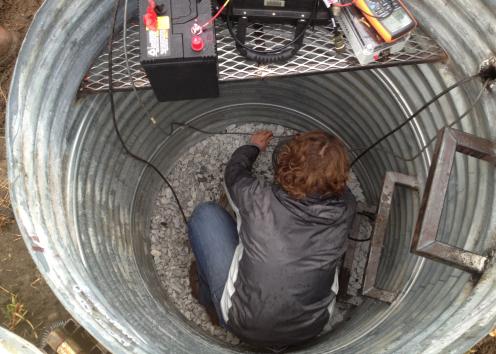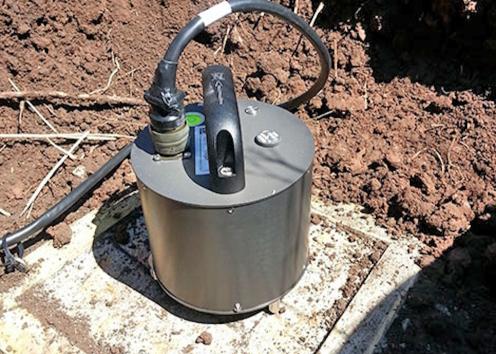Monitoring Earthquakes in Kansas

The KGS monitors earthquakes through a multi-station seismic network. In response to a surge in earthquake activity in south-central Kansas in 2013, the KGS installed a temporary network in the area to locate the source. The cause was determined to be the increased disposal of wastewater associated with oil and gas operations. Earthquakes caused by wastewater disposal are known as induced seismicity.
In 2016, the KGS established a permanent seismic network throughout the state. Before it was set up, there were only two seismic monitors in the state. Operated by the U.S. Geological Survey, they were located at Cedar Bluff Reservoir in western Kansas and the Konza Prairie Biological Station south of Manhattan. Larger Kansas seismic events and smaller ones close to the Oklahoma state line also were picked up by the Oklahoma Geological Survey seismic station network.
Since the KGS network went online in 2016, exponentially more earthquakes have been recorded in Kansas per year because the monitors are so sensitive they can detect earthquakes lower than magnitude 1.0. In 2017, after the network was installed, the KGS monitors recorded 610 earthquakes between magnitudes 2.0 and 4.0—and more than 2,000 below 2.0. In comparison, the USGS reported 122 earthquakes, all between magnitude 2.0 and 4.0. Before the networks were operational, the vast majority of earthquakes in the state, both natural and induced, would have gone undetected because they were too small to be felt or picked up by distant seismometers.
The Kansas Earthquakes page on the KGS website includes a continuously updated interactive map showing where earthquakes have occurred in the state since 2015. Data for each event also are provided.



